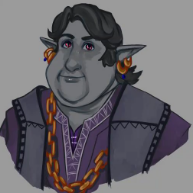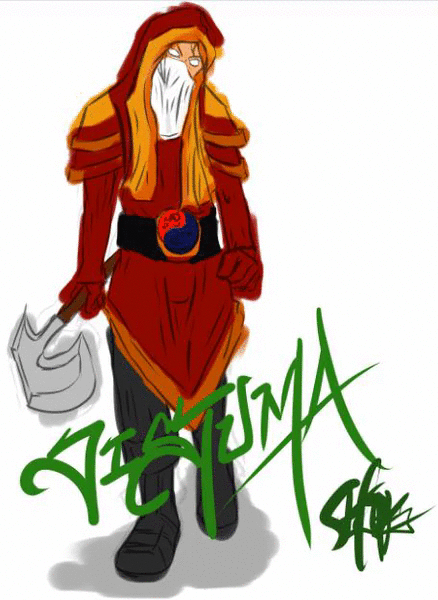~*~
Introduction
Conjuration remains to this day one of the least practiced Arcane Arts. The simplest description of this magic would be ‘Life Evocation’. As an Arcane art, conjuration relies on the void to create what will be summoned before pulling it into the real world and then sustaining such with mana. In the case the summon would no longer be sustained, it would vanish.
On its own, Conjuration allows the mage to summon animals and plants. Further study allows the mage to summon living hybrids. If the mage is a practicer of evocation, they can also summon an elemental creature.
Much alike other forms of evocation, summoning creatures or plants requires extensive study of the subject. For Conjuration, this involves in depth study of each and every being that one wishes to summon.
Explanation
First Steps
All Arcane users will first create their connection to the void in order to harness the power they need to learn and conduct their magic. For Conjuration, this is no different, connection is made through meditation. However, a word of caution must be told; the consumption of mana by the products of Conjuration is much greater than with other evocation disciplines.
Studying
Conjuration, for the most part, is not for the faint hearted. To summon animals, one will have to go - observe, capture, vivisect and dissect the creature. Many conjurers have a laboratory of sorts where they can study and perform procedures in peace. Others choose to record their findings, yet words will not do justice, one will have to sketch the outside and inside of the creature. For summoning plants, the study is relatively easier. A veteran conjurer could easily be referred to as a biologist.
Summoning
The summoning of a living being is an art, and the few conjurers that practice this discipline each have their own form of bringing their beings to life.
At first, the connection to the void must be established. There, the conjurer can create the living being from their studies. This is the longest part of the casting process, and the most crucial - for if the living being is remembered incorrectly, it shall not be summoned alive.
Once formed in the void, the summoning can take many forms. Whereas some may choose to bring it into existence from nothing - the creature appearing in whole from thin air; some prefer a more spectacular summon. One may have it form inside-out… first having a heart appear, flesh and bones growing from their out to finalize as the creature. Another may have it form from bottom-up… wisps of mana appearing upon the ground, surging upwards as they leave the limbs of the creature in their wake, combining to form the body and finally vanish as the creature is completed. It has been heard that a conjurer may form a one-way portal of sorts, from the which the being crawls out into the world.
Let us see an example summoning;
A dark elf clad with crimson robes closes their eyes, taking in a deep breath. Before long, their brow furrows, body tensing. Suddenly, they would open their eyes, staring forth at the patch of grass before him.
From such grass, wisps of purple would suddenly spark from a single point, slithering along the ground in a double helix as they left in their wake the scaly and lengthy body of what appears to be a brown snake. The wisps would vanish at the formation of the head, just as the snake rose up and hissed at the dark elf.
Control
Once summoned, the creature is under the control of the conjurer. The conjurer must remain focused on their being while channeling mana to it so that it may remain in the world. The creature will execute his bidding, regardless of its state, to death. Pain will be felt by the summon, but unless physically disabled, it will persevere with an iron will.
Letting Go
Depending on the time practiced, the conjurer will eventually tire and be forced to return the summon to the void or face a high risk of death. When the mage drops their focus, the creature will vanish - as the conjurer wishes, either instantly, or in some more theatrical form. This could be falling to dust (which in turn vanishes) or being ‘warped’ and ‘sucked’ away back to the void.
In terms of ‘products’ of the summoned being (such as ingested conjured fruits or injected venoms), they will too vanish. However, the effects are permanent; if a poison has shut down the nervous system, the poison’s effect is not reversed.
Forms of Conjuration
Conjuration allows for great creativity from the part of the mage in terms of summoning and utility of the resulting summon.
Morphon
This is the most common use for conjuration, the summoning of animals. From the smallest critter to a sizeable bear, the mage uses Morphon Conjuration to summon these creatures.
Perennial
This rare form of conjuration is used to summon plantlife. It could be used to pose as a druid, entangle foes with vines, temporarily treat wounds. For all this, the mage uses Perennial Conjuration.
Hybrid
The most experienced Conjurers soon have the drive to delve into something more than the common creatures they might find. The well versed in Conjuration can come to learn how to merge characteristics of the creatures they have studied and perhaps give wings to a snake, or give wolves the armour of scorpions.
Primordial
Those Conjurers that have delved further into the Arcane and learnt a form of elemental Evocation can with practice combine the two. This allows for the creation of creatures made of flames or other elements. The conjurer is at that time using Primordial Conjuration.
Progression
Tier I
The beginner of conjuration should probably spend most of their time preparing for their later ‘tiers’ by meditating and making their connection to the void stronger. With this time they should also start dissecting, preparing summons in advance, studying the living beings they are interested in.
Tier II
At this point, they should be able to summon small creatures with relative easy, such as living beings the size of a mouse… but no larger than a cat.
Tier III
Once an adept at Conjuration, they may start to summon such things the size of wolves. It is also when they may experiment with smaller hybrids. It is also possible at this stage for the adept to summon two of the same creature at once (without going over the size limit if both are combined).
Tier III+
Mastering Conjuration allows the conjurer to commence summoning Primordials if they are also adept at a form of evocation. Over time, as they remain connected to the void, they are able to draw on greater amounts of mana, capable of summoning larger creatures for longer periods of time (no larger than a large bear). They are able to focus better, and depending on the creature summoned, they can summon 3-5 at a time.
Red-Lines
No creature excessively large can be summoned (whales, drakes, dragons etc.)
No more than five creatures simultaneously (the size of each creature being large bear divided by 5). Each creature will behave almost identically at this stage and remain close to each other.
No summoning different creatures simultaneously.
Fatigue is to be roleplayed accordingly. No tier is immune to exhaustion.
You cannot mix living creature with evocation, the creature is either completely fire or completely flesh with no fire.
Having the creature wander off into the wilderness will result in the creature dispelling.
Druids do not commune with and cannot control summoned living beings.













